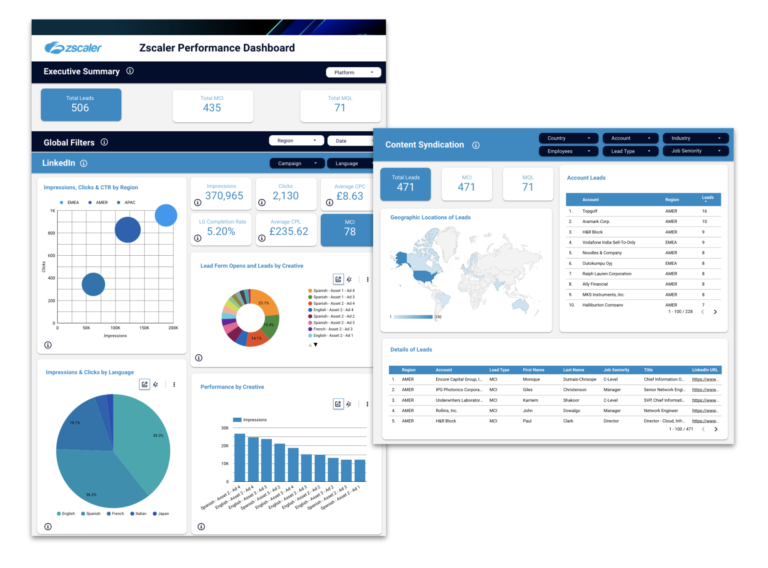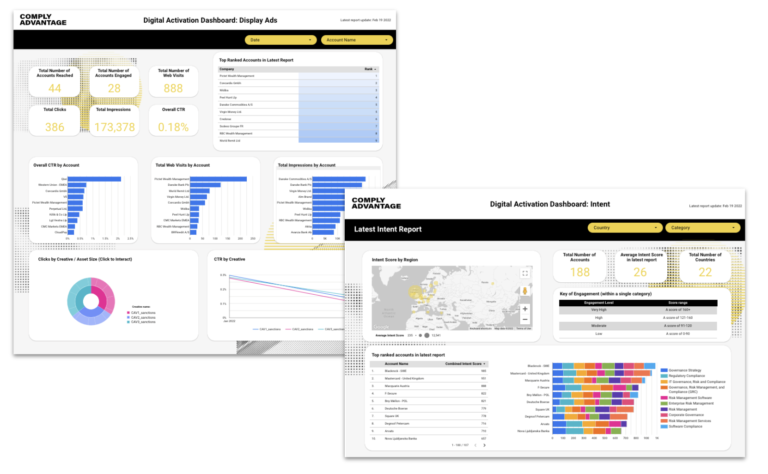The Agent3 team is back from B2BMX in Scottsdale, Arizona, and what an incredible event we’ve had! We had a lot of great, engaging conversations, meeting old friends and new faces, with everyone interested to know more about how they could take their ABM programs and demand generation efforts to the next level.
We set out to B2BMX with an exciting agenda: to promote and discuss ABM and demand generation best practices, and to share some innovative new thinking surrounding ABM measurement that would help practitioners to improve, scale, and grow their accounts.
Yet it was this thorny issue of measurement that remained our big focus throughout the event, and – as you will see – how do you show value from your ABM investment? It’s a deceptively simple question that leaves many ABMers grappling to try and understand what to measure and how. After all, there’s no one-size-fits-all approach to ABM measurement that can reliably demonstrate results.
Yet the question is not without answers, and at the recent B2BMX event in Scottsdale, Arizona, Agent3’s Alisa Groocock, VP of Advisory and Steve O’Neil, Director of Technology, led a workshop to help ABM leaders more effectively navigate the challenges of measuring ABM.
Here are the three key steps they presented to progress your organization’s ABM measurement journey:
1 ) Start with the business context
At the offset, consider how mature your organization is when it comes to ABM planning and execution. At the early stages of committing to a business’s ABM initiatives, measurement objectives might center around planning for initial activities, and assessing campaign results for the first forays into the world of ABM. However, as organizations embed ABM within their DNA, it is increasingly useful to take a cross-departmental and holistic view of ABM performance, and change focus to maximize efficiency and consistency across the board. By defining your organization’s ABM maturity and understanding the “right” measurement question to answer, it becomes easier to focus in on demonstrating value.
The final consideration for contextualizing ABM measurement is working out who you are trying to influence with your results. For ABM practitioners to tell a good story with their marketing measurement, they need to approach results in the same way they might define their program strategy – by thinking about who their audience is, and what problem they are trying to solve. For example, a measurement project designed to help your marketing team make better campaign decisions is going to look very different to the one you might use to show your sales leaders which leads to prioritize and how, based on the content that a particular customer is most interested in.

2) Consider your KPIs carefully
With the who and why of ABM measurement in hand, it’s time to address the “what”. KPIs are the meat of most measurement projects, so it’s important to get specific about what you want to measure and why. ABMers need to think about what mix of metrics will help them show success in the short, medium and long terms. We need to know if the program is showing results within weeks (if not days) of launch with “quick hit” metrics such as opens, clicks and web visit data. Medium-term metrics are oriented around engagement with key buyers and generating early-stage opportunities. Long-term metrics include pipeline, revenues and increases in areas like average deal size and velocity-to-close.
By using the questions, maturity stage and audience laid out in step 1, ABM practitioners can then start breaking down what it is they think will help tell that story on a more tactical level. As the old adage goes, “what gets measured gets managed”. With that in mind, ABMers should list out what they’re measuring now, and think about what the gaps might be that would show value and drive meaningful change based on the data.

3) Understand your path forward
At this stage we have an audience, a measurement objective, and two sets of KPIs – what you currently measure, and what you want to measure. Now it’s time to think about where we go from here.
This begins with considering the ABM tech stack. Many organizations have large and unwieldy tech stacks, and the first step is to map it out to understand what might be available to help us tell a better story. Once we’ve got a sense of what’s at our fingertips, we need to understand who owns that platform, and how we might work together to understand and access it. This can help make an otherwise daunting set of technologies into a single, cohesive story of success that incorporates multiple different streams of ABM activity.
However, there will always be times when data remains elusive – maybe a particular KPI you wanted to include isn’t being measured anywhere right now, or maybe the team who holds that data is just too busy to provide it. This is where the best laid plans of ABMers meet the cold light of reality. At this point, we accept the messy truth that sometimes we have to start with KPIs that tell half the story and form a plan to how we get to the other half later on. It’s important to lay out a roadmap for how you might work towards accessing this information later on, or work out if it’s truly a KPI that can be left off without hurting your measurement objectives.
While ABM measurement is undoubtedly a challenging endeavor, these three steps can help break down the chaos and confusion that often surround such initiatives. At Agent3, we can work with you on defining your own measurement roadmap to truly measure what matters. To learn more about our approach to ABM measurement, or have an exploratory chat, drop us an email at measurement@agent3.com.
